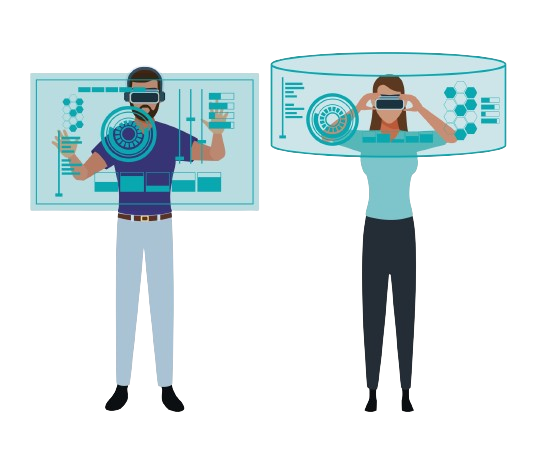Mixed Reality
With advancing technology, many new concepts have entered our lives. In recent times, the most used and widespread concepts are virtual reality, augmented reality, and mixed reality. These three concepts have become the key to traveling between the real and virtual worlds. Through the new technological devices integrated into our lives, concepts like virtual and augmented reality are becoming more recognized. However, very little is known about mixed reality, which acts as a bridge between both worlds.
Virtual reality refers to being fully immersed in a virtual environment using technological equipment with specific core functions. Augmented reality, on the other hand, adds digital objects from the virtual world into the real world. Mixed reality, which serves as a bridge between these two channels, refers to environments where users can interact with both real and virtual content.

Virtual Reality (VR), Augmented Reality (AR), and Mixed Reality (MR) all require a digital device to experience. For VR, goggles that block interaction with the real world and allow full immersion into the virtual world are used. For AR experiences, devices like smartphones and tablets are used to overlay digital objects onto the real world. For MR experiences, goggles such as Microsoft HoloLens, HTC Vive, or Magic Leap are required, which allow users to still see the real world while interacting with virtual content. Mixed Reality technology, which is now integrated into many areas of life, helps improve the quality of services in various fields from healthcare to entertainment. It enables companies to increase their potential through practical and easy applications like project planning and project development. MR applications in the fields of education and entertainment can recreate historical events or be used to develop mixed reality-based math learning tools, enabling students to learn while having fun. This can help improve the efficiency and engagement in education. Within healthcare services, MR applications are also used in therapeutic settings to support psychotherapy and rehabilitation processes. Additionally, it can enhance realism in surgical training through simulations. MR applications can also be used to monitor patients’ treatment processes more comprehensively. In industrial design and manufacturing, MR can reduce costs and speed up processes such as product development and production. In defense and space research, mixed reality applications can allow for more comprehensive experiments with less risk. It can also be used for training, flight simulations, and space research scenarios. In today’s retail and marketing industries, where virtual environments dominate, companies can differentiate the marketing of their products by using MR applications to make them more original.
Mixed Reality, which opens doors to innovation for various sectors by combining the real and virtual worlds, is expected to grow further with advancing technology. In addition, it is expected that many more industries and companies will integrate mixed reality applications in the future. The delivery of more creative and rich content through mixed reality, and the easier implementation of such content into real life, are clear indicators that MR will play an even bigger role in our lives going forward. However, there are several challenges in the development process of rapidly advancing MR technology. At the forefront is the issue of data privacy, which is a concern across all technologies. As MR eliminates the boundaries between the real and virtual worlds, much greater attention must be paid to privacy in its future development. Furthermore, the hardware must be powerful yet suitable for portable use. Lighter and more user-friendly devices will expand the range of MR applications and allow them to reach a wider audience.


Among the future plans for MR applications, which are intended to be developed for broader use across multiple fields, artificial intelligence integration stands at the forefront. It is believed that integrating AI with MR applications will make the experiences smarter and much more efficient, offering more flexible and varied options. Additionally, 5G connectivity and expanded industrial usage are also part of the planned developments for the future of mixed reality applications.